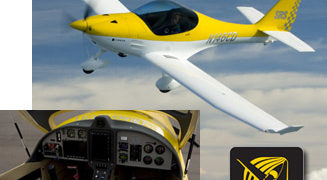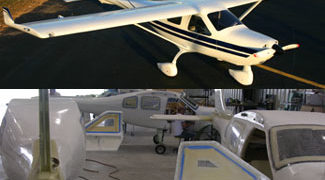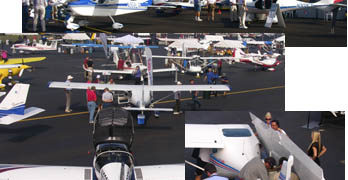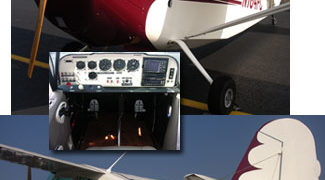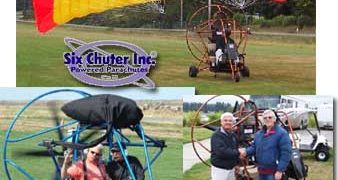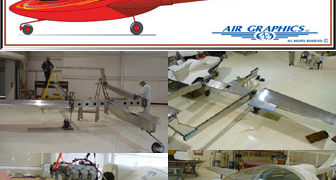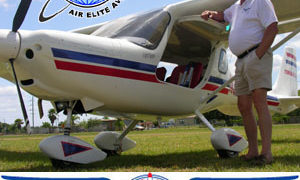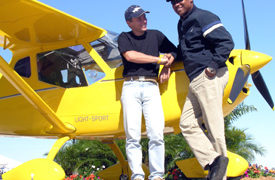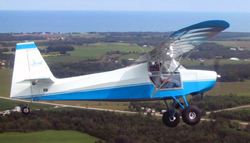The Technical Work of F37
Light sport aircraft industry stakeholders engaged in the ASTM standards initiative include manufacturers of airplanes (conventional fixed wing aircraft), powered parachutes, weight shift controlled aircraft, gliders, gyroplanes, and lighter-than-air. In addition, F37 volunteers come from the flight instructor community, recreational pilots, parts manufacturers, and the regulatory community.
Committee F37’s work embraces:
Minimum safety, performance and flight proficiency requirements.
Quality assurance to install manufacturing controls confirming that aircraft meet design criteria.
Completed aircraft production acceptance tests and procedures assuring that completed aircraft meet reported performance as demonstrated in the prototype aircraft, including design limits such as empty weight; center of gravity; performance specifications; controllability and maneuverability; longitudinal, lateral, and yaw stability; stall speeds; handling characteristics; engine cooling and operating characteristics; propeller limits; systems function; and folding or removable lifting surfaces.
A plan for continued airworthiness, including methods for monitoring and maintaining continued operational safety, and processes for identifying, reporting and remedying safety-of-flight issues.
Search Results for : Flight Design
Not finding exactly what you expected? Try our advanced search option.
Select a manufacturer to go straight to all our content about that manufacturer.
Select an aircraft model to go straight to all our content about that model.
Getting Ready for Sebring’s LSA Expo #4
Over January 17-20, 2008 every significant company in Light-Sport Aircraft will be in Sebring, Florida. The Sebring Expo preludes with an ASTM
meeting. During the event LAMA hosts its annual member meeting and dinner plus its board will meet. EAA will organize a slate of info forums. Importantly, vendors can deliver demo flights all day every day. *** Event Chairman Bob Wood reported, “Cirrus Design is the most recent addition to the stellar group of companies now sponsoring the event. They join Cessna, Garmin, The Southern Ford Dealers, and others.” *** Sebring #4 appears bound for new records. Paid exhibit space available increased again in 2008. “We are up nearly 30% in spaces over 2007, and now nearly every one of those is booked,” said Wood. Most of the 47 companies and the 59 models that have achieved SLSA status can be found at Sebring making it the largest collection of LSA anywhere.
Jabiru’s J-250 3-Door SLSA Leads September 2007
In September, as the Cessna Skycatcher’s wave of orders soaked up funds that might have gone to other SLSA, Jabiru logged the most FAA registrations — 6 more J-250s, bringing the company to 44 units delivered and placing the model 9th overall among fixed wing airplanes. In second place, CT, CH-601XL, and Skyboy each added three registered units. Though the month was slower than usual for fixed wings, weight-shift added another strong month with 19 registrations (though some are wondering if these trikes are all SLSA or include ELSA conversions; we’re researching this). Combined, trikes and powered parachutes added 25 aircraft to the FAA registry while fixed wings added 27 for a total of 52 new SLSA. *** Jabiru USA has moved steadily up the market share chart. As the only aircraft company I know supplying both airframe and engine, Jabiru USA advanced steadily into the Top Ten of SLSA providers in the USA.
AOPA’s Hartford Expo Has Generous Count of LSA
Most pilots know AOPA, the Aircraft Owners and Pilots Association, has been fighting the user fee battle…and they’ve been doing well resisting the might of the U.S. government. But they must also have a connection with Mother Nature as warm, beautiful weather shined on opening day at Connecticut’s Brainard airport. *** On display: StingSport, Skylark, the new Breezer II, Allegro 2000, SportCruiser, Sigma, Thorpedo, Sport Cub, Bravo, Sierra, CTsw, Jabiru J-250, Gobosh G-700S, and Remos G-3. Contrary to earlier info, American Champion brought The Champ, Cessna displayed their Skycatcher mockup, and Cirrus flew their SRS. In all, I counted 17 LSA at Hartford. That amounts to a healthy 19% of all airplanes on display.
The Champ: LSA that Isn’t…a Light-Sport Aircraft
Unsure about the certification used for LSA? Don’t know about premium-priced LSA from distant countries? Struggling to accept Rotax power? If you ask yourself these questions as some GA pilots are doing at AOPA’s Hartford Expo, then you might want to consider The Champ for under $90,000 or $100K nicely equipped. Here’s a familiar aircraft certified under a traditional system, Continental O-200 powered, made in USA. For some, this is enough to suggest purchase. One shortcoming is that The Champ has limited useful load — given an empty weight of 920 pounds (an allowed figure for this Part 23 certified aircraft eligible though not for a LSA) — leaving 292 pounds of payload assuming a full 18 gallons of fuel. *** My first 35 hours were in a Champion Citabria and I hold a sweet spot for the design. I look forward to doing a flight review.
Six Chuter Powered Parachutes Joins the LSA Parade
As the deadline approaches for ultralights needing to convert to LSA, companies are recognizing the need to get products ready for the new age of light-sport. The latest: Six Chuter, one of the original producers of powered parachutes…but one that took their time hopping on the bandwagon. *** Director of Communications, Doug Maas (who also completed the production test flight), reports the company developed more than 1,000 pages of documentation to meet ASTM standards. The voluminous information came from creating a brand-new carriage with multiple configurations. Legend (which is SLSA #58) can be a single seater, tandem seater, or a somewhat rare side-by-side powered parachute (photo). This is a novel approach to certification and explains the delay for the company’s SLSA entry. Six Chuter said, “The Legend XT SSDC (Side-by-Side Dual Control) is our SLSA development model targeted for flight instructors and others who enjoy a side-by-side configuration.” Six Chuter will offer the XT SSDC and other models as either fully-built SLSA or as ELSA kits.
American Companies Continue LSA Development
Unless you’ve closely scoured the Internet or shows like AirVenture, you may think Light-Sport Aircraft are mostly foreign. By FAA registrations, that’s still correct; some two thirds are imports. But Yankee companies aren’t playing dead. *** An Orlando, Florida company says it has secured funding and is proceeding with a proof of concept aircraft called Horizon. This is a wide (51 in.) cabin, pusher engine, twin tailboom design using composite and metal construction with a base price target of $79,900 (probably a lot less than the “micro-jet” variation they see as a future project). *** One of the founders of New Horizons Aircraft is S-51D designer, Jim Stewart. His 70% replica Mustang that sold about 70 kits was powered with a 400-hp Chevy big-block engine. I took a flight in this thrill machine several years ago and I can still remember its powerful acceleration down the runway.
Here Come the LSA Hybrids…Storm Rally & Others
In the auto industry “hybrid” infers the use of multiple technologies (think: Toyota Prius). In aviation, hybrid could mean an airplane designed in one country and built in another. Even Boeing farms out subassemblies worldwide, integrating them in America. Car companies coined “domestic content” to state what portion of a car is “Made in the USA.” *** We’re doing it in LSA, too. Besides the Storm Rally (photo), Jabiru 170 and 250 and the Delta Jet 912 trike are hybrids. The Italian-designed, Canadian-owned, Skykits line is U.S.-built. *** Prestige Aircraft is the licensed manufacturer for aircraft designed by Storm Aircraft of Italy. Like Jabiru USA, Prestige brings in major components, assembles them, and finishes with U.S.-sourced elements, which better addresses the American market. Storm Rally comes with basic VFR flight instruments and equipment, including a turn-coordinator, tail-strobe, Icon 200 radio, and Garmin transponder with altitude encoder.
Bright Yellow Fk9 Was a Hit at Sebring’s Expo
He could see the benefit for his company’s sales, so Fk Leichtflugzeuge — or FK Lightplanes — president Peter Funk came from Speyer, Germany to support his new American importer, Tony Anderson of Fk Lightplanes USA. Tony brought his family operation to Sebring and their classy display at the main intersection of the U.S. Sport Aviation Expo attracted the attention of many in attendance. The intensely yellow Fk9 turned heads and lifted 25 pilots who took demo flights during Sebring. “I was very happy to see how well our high wing model was received,” said a smiling Peter Funk. The Fk9 Mk IV is a well-evolved design. Since the Mk I model flew in 1989, more than 300 aircraft have been delivered. The latest generation Mk IV features a wider cockpit area, four inches more legroom, and improved seat comfort. Unlike many LSA, Fk9 is available as a kit, fast-build kit, or ready-to-fly SLSA.
“Extreme” American Model Earns SLSA Certificate
Hot and heavy before the Sun ‘n Fun airshow opens, cool and light SLSA are on the fast track to approval. The latest announcement from Just Aircraft — formerly of Idaho and now of Walhallo, South Carolina — represents the 33rd aircraft model to qualify. Company spokesmen Harry Berndt and Troy Woodland informed me today that their brand new, Rotax 914-powered Highlander Extreme won its certificate from an FAA examiner. The turbo-boosted Extreme model from a company that built its reputation designing rugged, light kits seems appropriate for bush or short field operations at high elevations. Extreme’s taller gear and bigger tires and an aluminum leading edge wrap are geared to enhance this capability. Troy flew the plane from the company’s short strip and remarked excitedly, “It was off the ground in 30 feet (into a light breeze)!” They plan to show the model at Sun ‘n Fun 2006.
- « Previous Page
- 1
- …
- 112
- 113
- 114
- 115
- 116
- …
- 147
- Next Page »


